The moon bear (Ursus thibetanus), also known as the Asian black bear, gets its name from the white or cream colored crescent shaped marking on its chest. They’re found in Asia, stretching in a narrow band from southeast Iran across central Asia, and into southeast Asia, including China, Taiwan, far east Russia, North and South Korea, and Japan. Moon bears live in temperate and tropical forest among hills and mountains. They’re mostly herbivorous with a diet that’s 80-90% plant material. They will occasionally hunt small prey but most meat is scavenged, and they regularly feed on invertebrates as well. The IUCN lists the moon bear as “vulnerable” and its chief threats include habitat loss and overharvesting for parts, particularly bile, which is used for medicinal purposes.
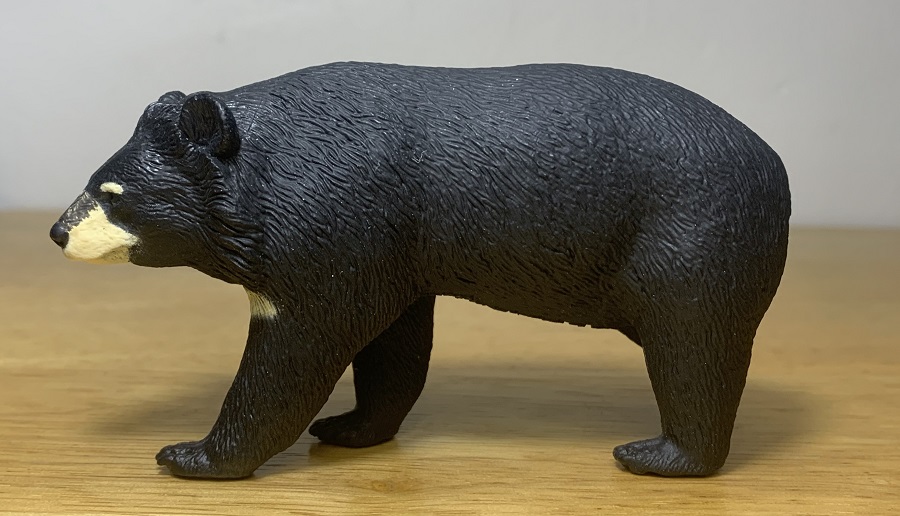
In our hobby the moon bear is moderately popular, especially with Japanese companies where they unsurprisingly favor the Japanese subspecies of the bear. There are 7 subspecies of the moon bear in total. Today we’re looking at the Safari Ltd. moon bear, released in 2017 and retired in 2023.

The Safari moon bear is presented in a striding posture with its right hind paw flexed and pushing it forward. The figure measures 4.5” in length and stands 2.5” tall at the shoulder. The actual bear reaches a length of 47-75” (120-190 cm) and stands 28-39” (70-100 cm) tall at the shoulder. Males weigh 130–440 lbs. (60-200 kg) while females typically weigh 88–276 lbs. (40-125 kg). The figure comes out to be between 1/10-1/16 in scale.
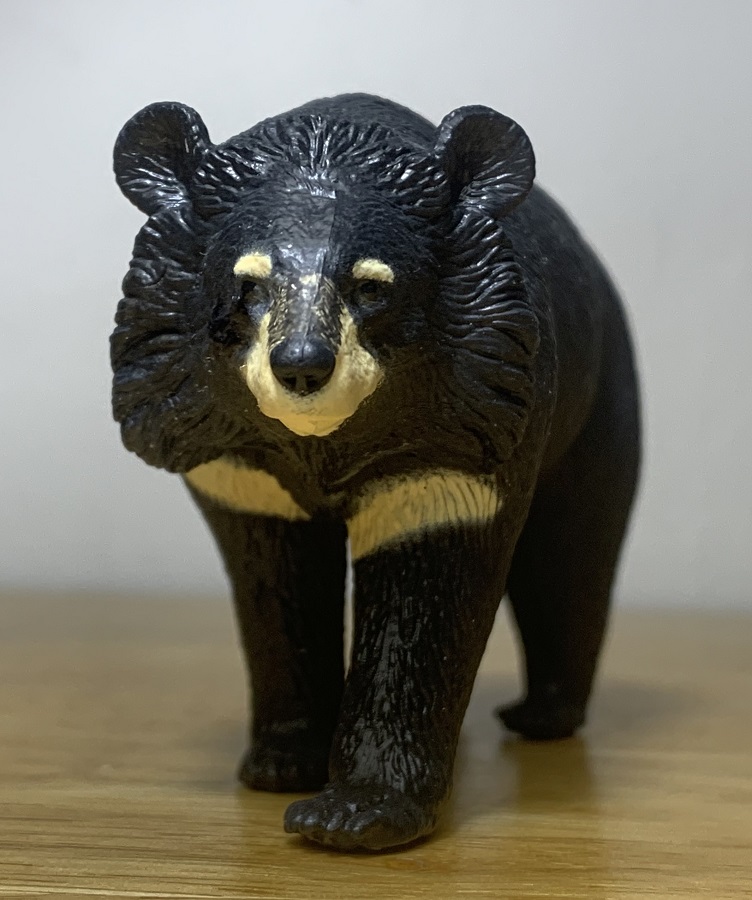
This bear was on my wish list ever since I got into this hobby, but I only just acquired it upon hearing it was being retired and included in Safari’s discontinued figures sale. This is a superb figure. It has an overall stocky, muscular, and compact build suitable for a bear. The ears are appropriately and proportionally large, as they should be for a moon bear. The fur texturing over the body is exceptional, especially the ruff of longer hair along the neck which is nicely layered on the right side of the slightly leftward looking head. The fur appears thick overall so you can’t see much of the bear’s underlying anatomy, but it appears to be a formidable animal anyway. The paws have accurately rendered pads on their undersides and a claw on each digit.
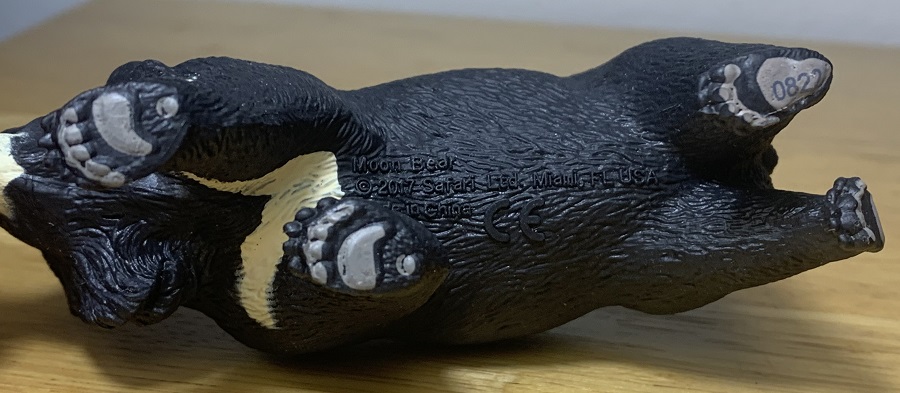
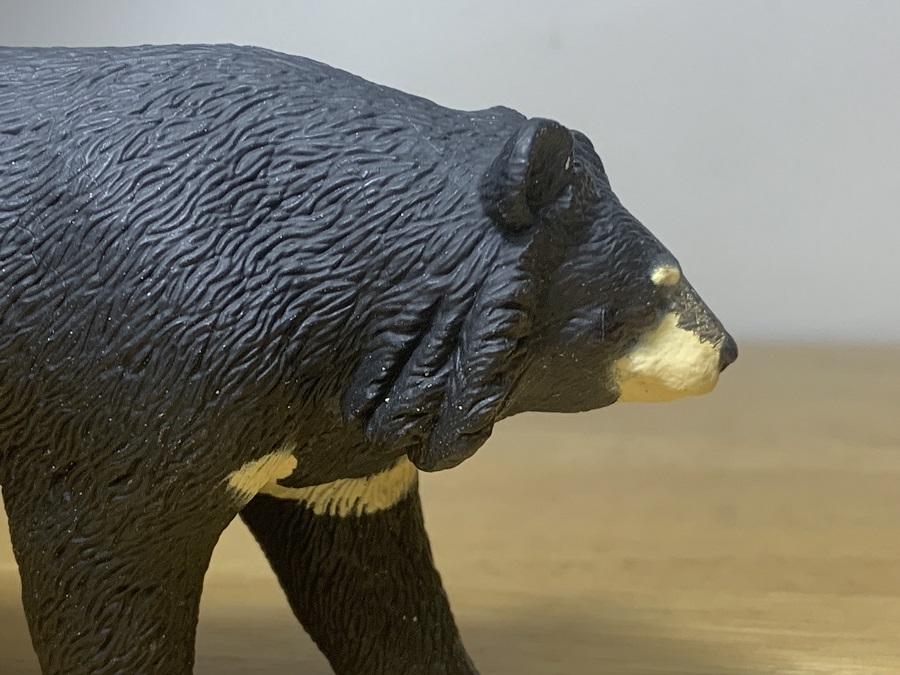
The figure is entirely black, except for the cream-colored chest marking. The muzzle and eyebrows are also cream colored. The foot pads are gray and the paint application on them is rather good. The eyes are painted with a glossy finish. In life this is what most moon bears look like but there also exists a chocolate-brown phase and a blonde phase that occurs in Laos, Cambodia, and Thailand. The paintjob is simple, there’s no need for it to be complex, but because of that it appears crisp and clean overall. The mouth is not outlined in black, which is always nice, especially with Safari figures.
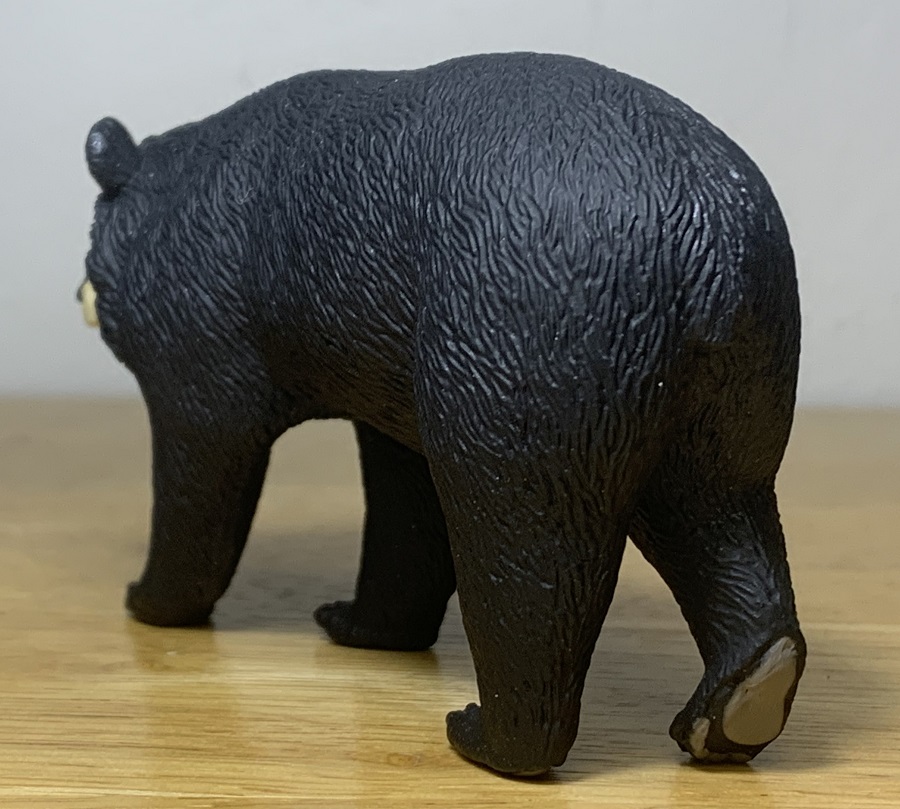

The Safari moon bear is a fantastic figure that I highly recommend and perhaps Safari’s best bear figure. The only nitpick I can see is with the scale, as this generally small species probably won’t scale well with figures of larger bear species. It matters little to me though, I’m just happy to have what I consider the best representation of this species displayed on my shelf. Although it is now retired you should be able to find it in stock among some distributors. Get it while you can though.
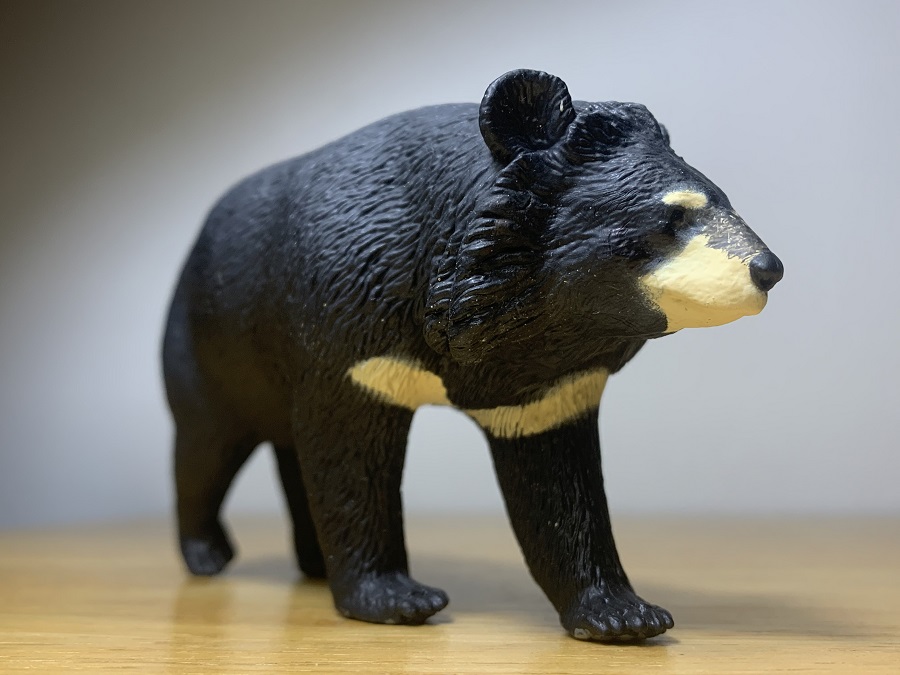
Disclaimer: links to Ebay and Amazon on the AnimalToyBlog are affiliate links, so we make a small commission if you use them. Thanks for supporting us!




I am glad you think highly of this figure, too! When it came out, it was greeted with mixed reviews, but I have always liked it and it’s the representative of this species in my collection.
I can’t imagine why it would receive mixed reviews. It’s the first bear in my collection because I’m still undecided on which figures to get with most of the other species. This one was always a no-brainer to me.
I think this is a marvellous figure.